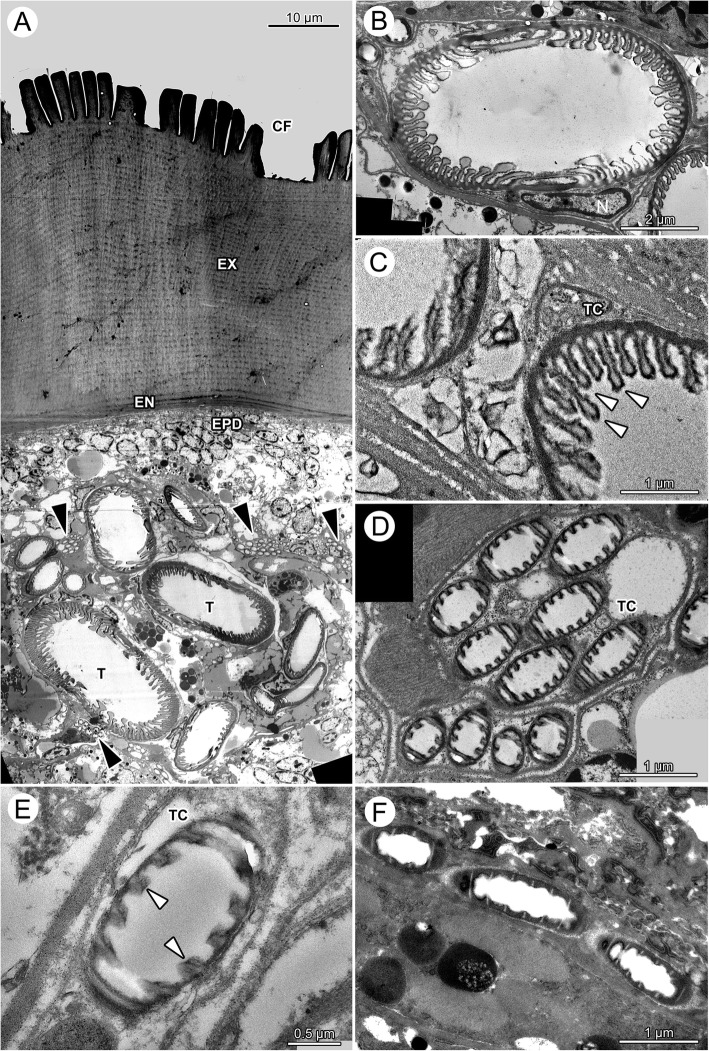Fig. 7.
Ixodes ricinus, TEM of tracheae and tracheoles. a Low-power, overview micrograph of larger and smaller tracheae of a fasting tick positioned directly under the cuticle. Note that the large tracheae reside in the hemolymphatic space while bundles of tracheoles are densely packed in tracheal cells and connected to other tissues. Arrowheads point to individual tracheae. b Cross section through a large trachea of a fasting tick. The inner cuticular lining of the tracheae forms taenidia of variable height and shape. In particular, the cross section of the larger taenidia is club shaped. c Detail of the taenidia of two neighboring tracheae of a fasting tick. The electron-dense epicuticle forms irregular surface extensions. d Cross-section through two bundles of tracheoles of a fasting tick, each bundle residing in its own tracheal cell. Tracheoles show regular taenidia. e High power magnification of a single tracheole in a fasting tick. f High power magnification of a single tracheole in a fully engorged tick. Note that the taenidia have disappeared suggesting stretching of the tracheoles. The electron-light core of the taenidia is still recognizable as light stripes, suggesting that it is mainly the intertaenidial region that stretches when ticks increase in volume. Abbreviations: CF, cuticular folds; EN, endocuticle; EPD epidermis; EX, exocuticle; N, nucleus of tracheal cell; T, trachea; TC, tracheal cell; black arrowhead, bundles of tracheoles; white arrowheads, taenidia

